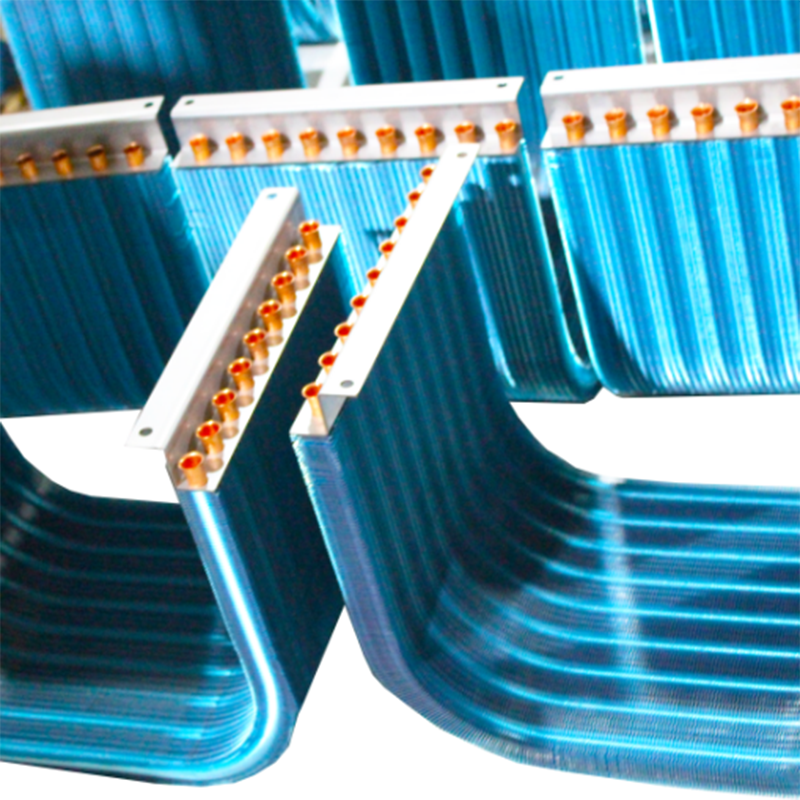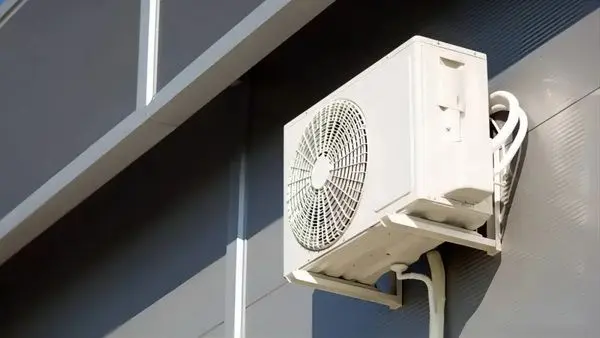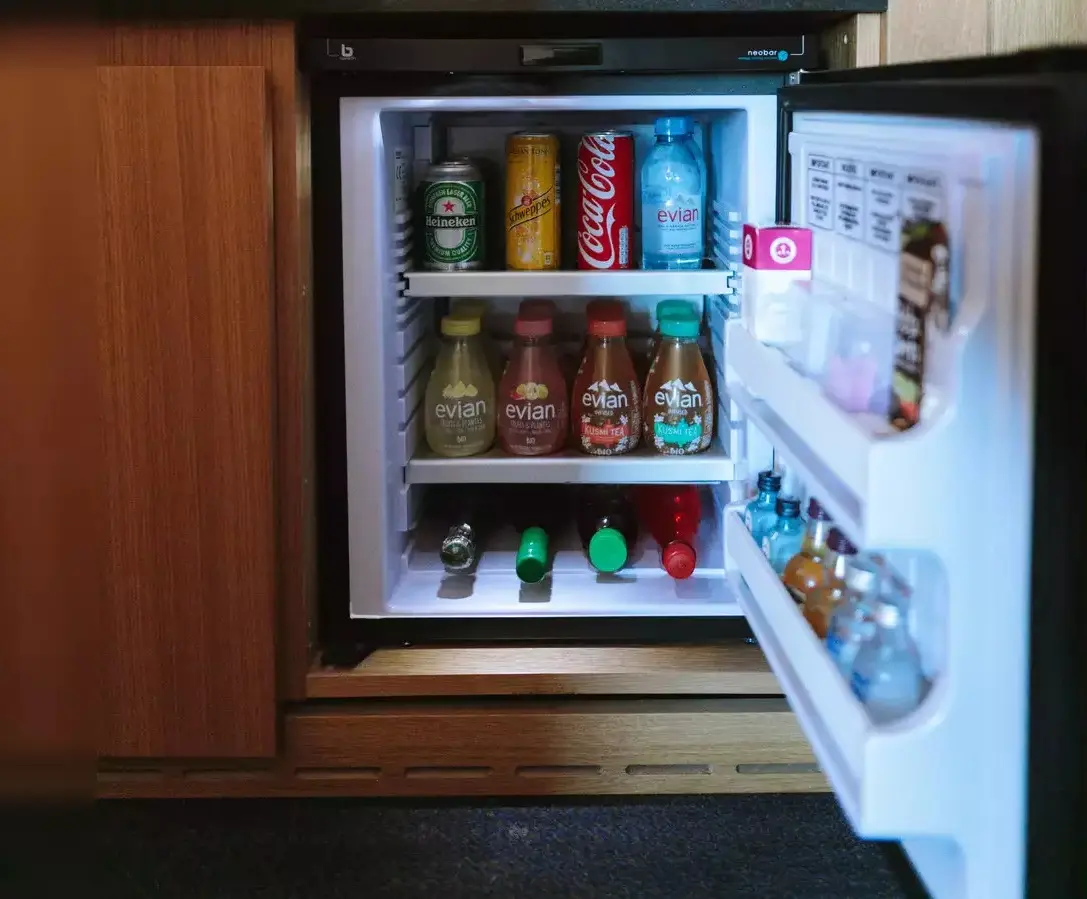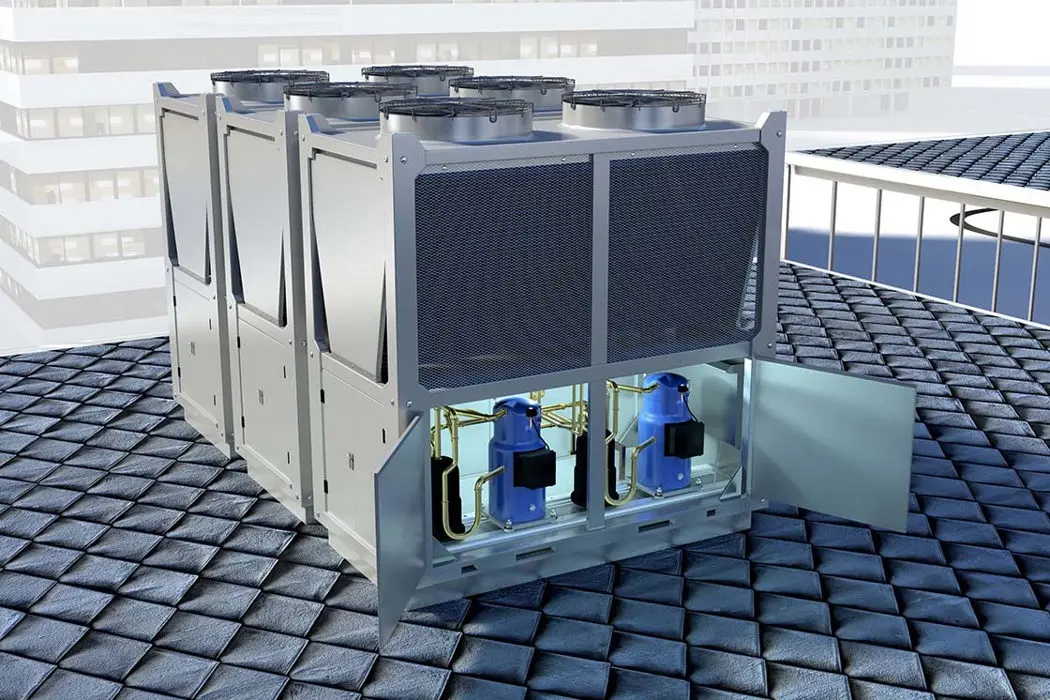Why Is AI Revolutionizing Heat Exchanger Design?
I have seen AI transform the way I approach Heat Exchanger design. Machine learning algorithms now help me achieveperformance improvements over 15% by uncovering complex patterns in operational data. With a correlation coefficient of 0.98171, I can trust AI for precise, cost-effective decisions in Copper Fin Heat Exchanger projects.
Key Takeaways
- AI automates complex calculations and simulations, cutting design time from weeks to hours and enabling faster, more accurate heat exchanger development.
- Data-driven AI optimization improves heat exchanger performance by increasing efficiency, reducing costs, and balancing multiple design goals effectively.
- AI-powered customization and predictive maintenance enhance product quality, reduce downtime, and speed up production for Copper Fin Heat Exchangers across various industries.
How AI Enhances Efficiency and Optimization
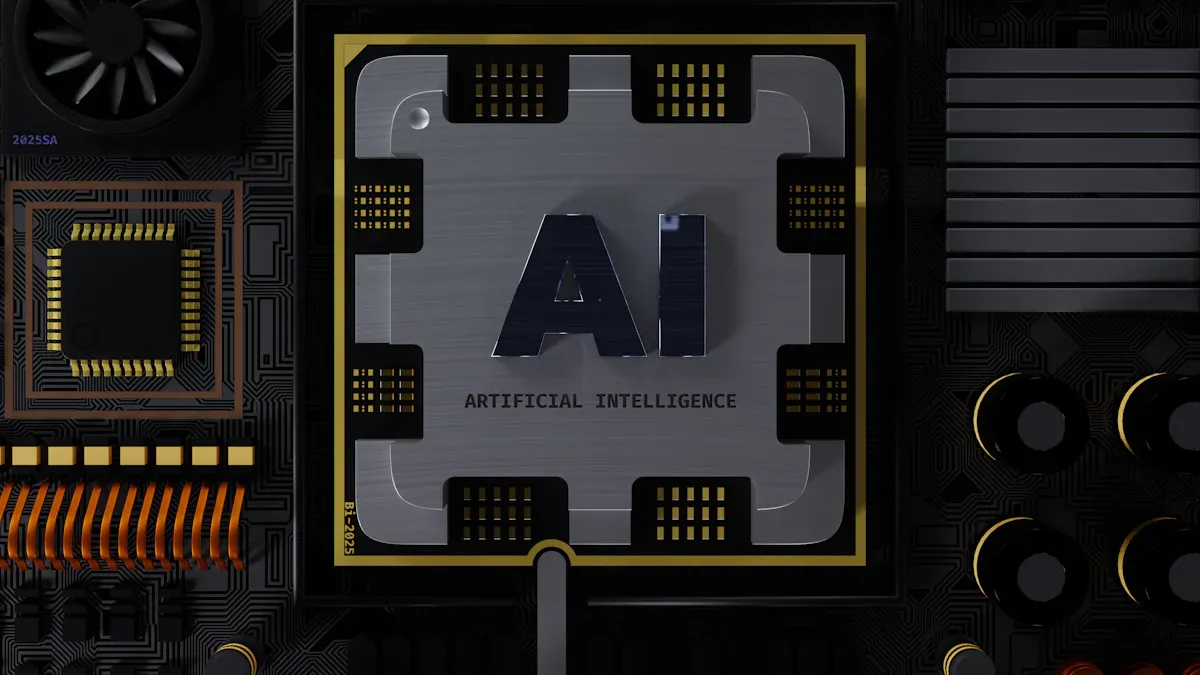
Automating Complex Calculations
I have seen AI transform the way I handle complex calculations in heat exchanger design. Traditional methods like finite difference or finite element analysis often require significant manual effort and time. Now, I use advanced AI techniques such as physics-informed neural networks (PINNs) and convolutional neural networks (CNNs) to solve partial differential equations and analyze thermal images. These methods allow me to model complex geometries and noisy data without the need for extensive meshing. Genetic algorithms and reinforcement learning help me optimize design parameters and operational strategies, reducing costs and improving accuracy. AI platforms like Neural Concept let me process thermal simulations in parallel, which saves hours of repetitive calculations. With these tools, I can automate tasks that once took days, making my work on Copper Fin Heat Exchanger projects more efficient and reliable.
Swarm intelligence algorithms, such as Artificial Bee Colony (ABC) and Ant Colony Optimization (ACO), have proven especially effective. They handle noisy, complex optimization problems and achieve very low errors, even under challenging conditions. I rely on these algorithms to reconstruct Heat Transfer coefficients and optimize designs for real-world applications.
| AI Technique / Algorithm | Application in Heat Exchanger Engineering | Key Advantages and Characteristics |
|---|---|---|
| Artificial Bee Colony (ABC) | Reconstruction of heat transfer coefficient in heat conduction | Robust to noisy data, avoids local minima, scalable, computationally efficient, suitable for complex boundary conditions |
| Ant Colony Optimization (ACO) | Same as ABC | Similar advantages as ABC; effective in inverse problems with complex solution spaces |
| Genetic Algorithm (GA) | Parameter estimation in non-Fourier heat conduction models | Stochastic optimization, effective for parameter search but less emphasized compared to swarm algorithms |
| Gradient-based Methods | Traditional optimization in heat transfer problems | Faster for smooth problems, but prone to local minima and less scalable for complex, noisy, or irregular objective functions |
| Finite Element Method (FEM) | Numerical solution of PDEs in heat transfer modeling | Used in conjunction with AI algorithms to solve heat conduction equations accurately |
Accelerating Simulation and Prototyping
AI has dramatically reduced the time I spend on simulation and prototyping. In the past, running thousands of design iterations could take months. Now, generative AI tools allow me to generate, simulate, and validate multiple prototypes within minutes. For example, Eaton used AI to cut new product design cycles from months to minutes, achieving an 80% weight reduction in a liquid-to-air heat exchanger. I use virtual simulations like finite element analysis (FEA) and computational fluid dynamics (CFD) to predict performance under various conditions. This approach lets me iterate quickly and optimize Copper Fin Heat Exchanger designs without building physical prototypes.
- AI surrogate models reduce simulation times from hours or days to minutes.
- Interactive design exploration shows the impact of parameter changes instantly.
- Companies like Danfoss and Subaru have cut analysis times from hours to seconds.
- Generative AI algorithms automatically create multiple design variants, speeding up virtual prototyping.
These advances help me bring new Copper Fin Heat Exchanger solutions to market faster and with greater confidence in their performance.
Advanced Data-Driven Optimization
I rely on AI-driven optimization to improve key performance metrics in heat exchanger design. AI helps me enhance thermal efficiency, reduce pressure drop, and optimize the overall heat transfer coefficient. By using hybrid algorithms like improved sparrow search and genetic algorithms, I can minimize total cost, maximize heat transfer, and reduce frictional losses. Multi-objective optimization lets me balance competing goals, such as maximizing heat transfer while minimizing energy consumption.
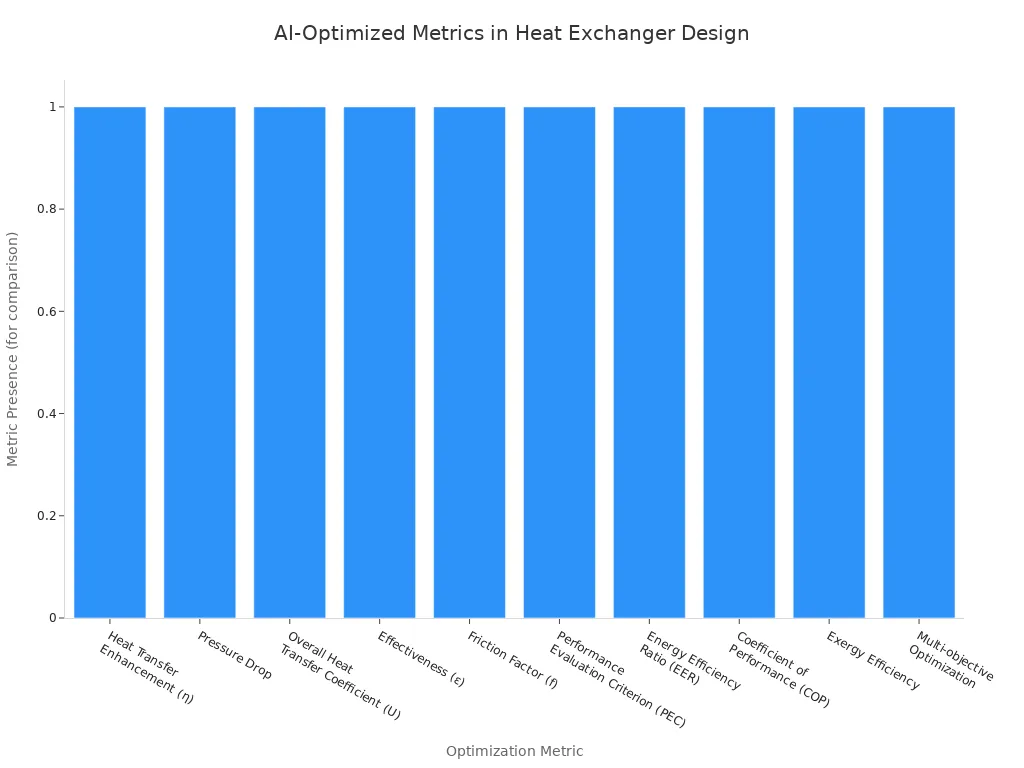
Machine learning models, including artificial neural networks (ANN) and support vector regression, outperform traditional empirical methods. These models predict heat rates with high accuracy, even when trained on limited data. I have seen optimized fin geometries lead to higher power densities and lower costs. Genetic algorithms help me minimize annual costs and weight while maintaining effectiveness. Particle swarm optimization improves flow distribution and reduces thermal stresses. These data-driven methods consistently deliver better outcomes for Copper Fin Heat Exchanger projects than traditional approaches.
Customization for Copper Fin Heat Exchanger Applications
AI-driven customization has changed how I approach Copper Fin Heat Exchanger design and manufacturing. Automation now streamlines design, production, and quality control, reducing operational costs and speeding up production cycles. Predictive maintenance powered by AI minimizes downtime and ensures optimal system performance. I use smart sensors and real-time monitoring to enhance performance in industrial applications, from refrigerators to medical ultra-low temperature refrigerators.
- AI automates simulations and testing, enabling innovative and tailored solutions.
- Predictive analytics optimize supply chain management, improving inventory control and reducing excess stock.
- Automation increases productivity and reduces manual intervention.
- Smart sensors and real-time analytics extend product lifespan and improve efficiency.
At senjun, I have seen how these advancements lead to better performance and cost-effectiveness in Copper Fin Heat Exchanger manufacturing. The market is evolving rapidly, and AI-powered automation positions companies like Ningbo Senjun New Materials Co., Ltd. at the forefront of innovation. By leveraging AI, I can deliver customized, high-quality heat exchangers for a wide range of applications, from display cabinets to dehumidifiers.
Real-World Impact of AI in Heat Exchanger Design
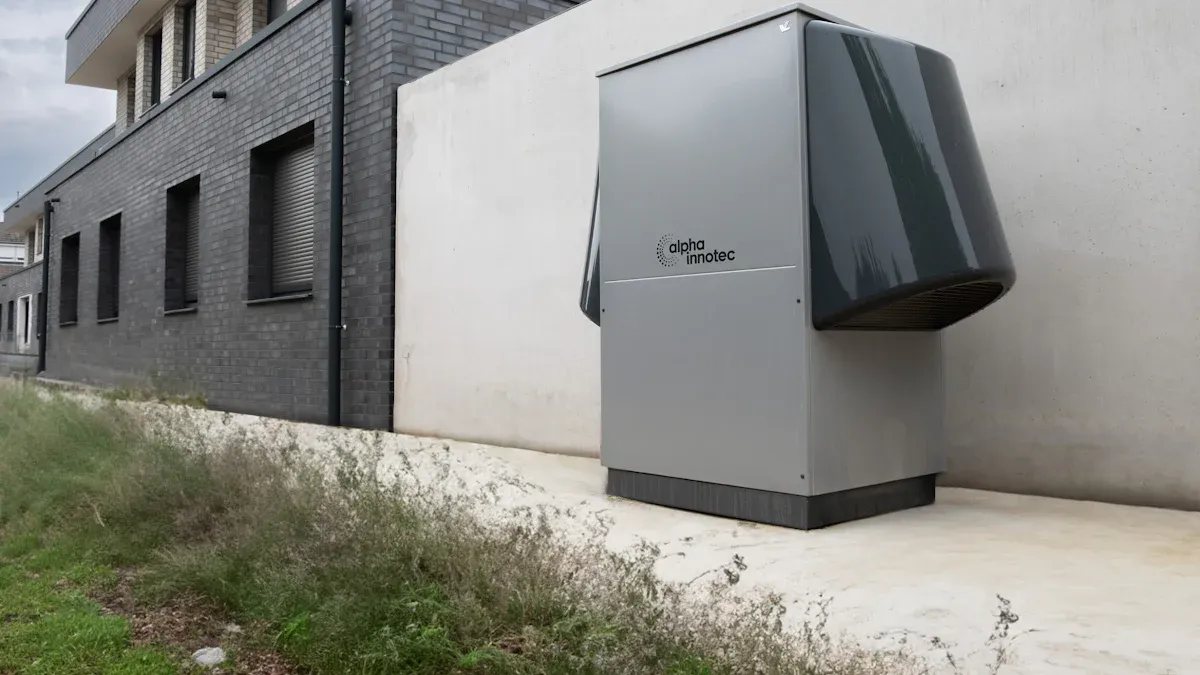
Case Study: AI-Driven Optimization at Alfa Laval
I have observed how Alfa Laval leverages AI to transform heat exchanger performance. Their AI-optimized plate designs, powered by advanced CFD simulations, deliver up to 15% higher heat transfer efficiency. I see real-time sensor data and machine learning models working together to adjust operating parameters, which reduces energy consumption and extends maintenance intervals by as much as 40%. Predictive maintenance tools help Alfa Laval minimize downtime and operational costs. The company’s Performance Monitoring service uses AI to analyze equipment health, resulting in longer equipment life and lower CO2 emissions. These improvements translate into significant energy savings—reducing customers’ energy needs by 50 GW annually and cutting carbon emissions by 25 million tonnes each year.
| Performance Aspect | Description | Improvement |
|---|---|---|
| Heat Transfer Efficiency | AI-optimized plate designs | Up to 15% |
| Maintenance Interval Extension | Predictive fouling and cleaning schedules | Up to 40% longer |
| Energy Efficiency | Real-time sensor data and ML optimization | Reduced consumption |
| Predictive Maintenance | Condition monitoring and proactive service | Less downtime, lower costs |
Case Study: Machine Learning for Compact Heat Exchanger Design at Danfoss
Danfoss has adopted machine learning to enhance both product quality and operational efficiency. I have seen their predictive maintenance approach, which relies on real-time condition monitoring, reduce downtime by up to 45% and maintenance costs by up to 30%. Machine learning algorithms analyze trends and predict failures early, extending equipment lifespans and improving reliability. Their Best Point Control software, developed with Dieci, automatically adjusts engine and transmission parameters, achieving up to 40% fuel savings in certain conditions. This technology reduces operator fatigue and emissions, while boosting productivity and product quality compared to traditional methods.
senjun—AI-Enhanced Design of Copper Aluminum Fin Heat Exchangers
At Ningbo Senjun New Materials Co., Ltd., I have experienced firsthand how AI-driven design and manufacturing set new benchmarks for Copper Fin Heat Exchanger solutions. Our AI-powered systems automate simulations, optimize fin geometry, and streamline production for applications ranging from refrigerators to medical ultra-low temperature refrigerators. I use smart sensors and real-time analytics to monitor performance, ensuring each Copper Fin Heat Exchanger meets strict quality standards. AI also supports predictive maintenance and supply chain optimization, which reduces costs and improves delivery times. By integrating AI, senjun delivers highly customized, efficient, and reliable heat exchangers for diverse industries, including display cabinets, dehumidifiers, and wine cabinets.
AI-driven deep learning models now enable interactive design and optimization of heat exchangers across industries such as automotive, chemical, and HVAC. These tools improve energy efficiency, reduce costs, and make advanced design accessible to more engineers.
AI has changed how I design heat exchangers. I see real-time optimization, predictive maintenance, and continuous improvement shaping the industry.
- AI adapts to dynamic data, boosting efficiency and reliability.
- Market growth projections show rapid adoption, especially in Asia-Pacific.
- Smart solutions and digital transformation drive innovation and sustainability.
FAQ
How does AI help me design heat exchangers faster?
I use AI to automate simulations and calculations. This reduces design time from weeks to hours.
AI lets me test more ideas quickly and improve results.
Can AI improve the quality of Copper Fin Heat Exchangers at senjun?
Yes. I rely on AI to monitor production, predict issues, and ensure each unit meets strict standards.
- I see fewer defects and higher efficiency.
What industries benefit most from AI-designed heat exchangers?
I serve industries like refrigeration, medical, and HVAC.
| Industry | Benefit |
|---|---|
| Refrigeration | Better efficiency |
| Medical | Reliable cooling |
| HVAC | Lower energy costs |











